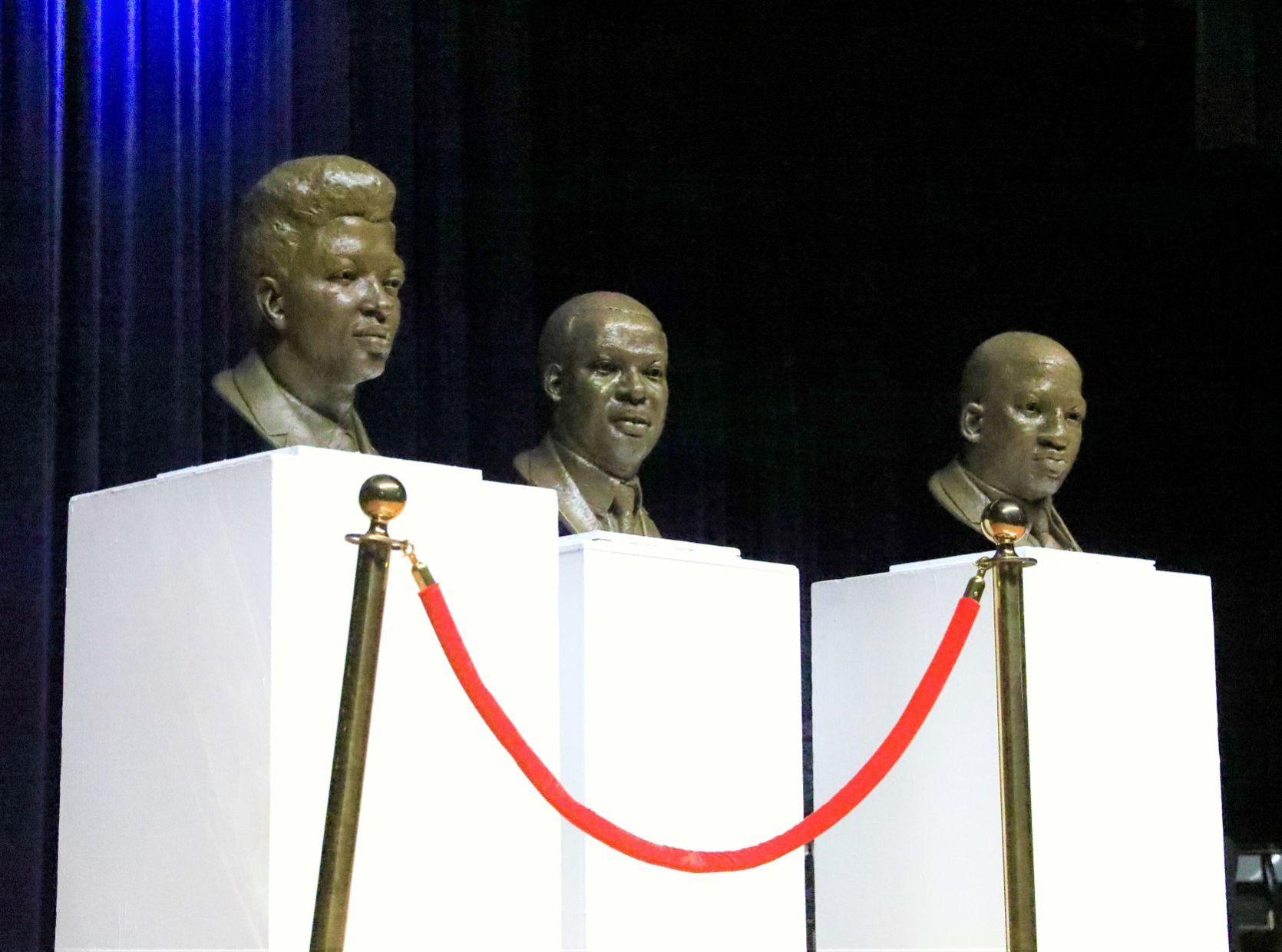Sellers urges that Orangeburg Massacre story be kept alive
By: TERRY BENJAMIN
Feb 14, 2022

Memorial busts of Henry Smith, Samuel Hammond jr., Delano Middleton. (Panther photo by Terry Benjamin)
On the 54th anniversary of the Orangeburg Massacre, South Carolina State University unveiled a new monument for the three students killed -- Henry Smith, Samuel Hammond Jr. and Delano Middleton – on Feb. 8, 1968.
During the Feb. 8 memorial service, civil rights activist Cleveland Sellers gave the keynote speech, urging people in attendance to keep the memories of the event and the people affected alive and well. Never let the truth be forgotten.
“I want to remind us that we have to be vigilant, persevere and we have to keep the story alive and in the front places and people’s minds as much as possible,” Sellers said.
“I think it’s important for us as a community to tell the story of the Orangeburg Massacre. It has been covered up and it is intentionally covered up and the state of South Carolina has taken no action to reconcile this issue,” Sellers said.
The Orangeburg Massacre occurred on Feb. 8, 1968, when a group of South Carolina Highway Patrol officers opened fire on a group of students on the campus of what is now South Carolina State University. The students had been involved in protests over segregation at a Russell Street bowling alley. Three students were killed.
“We’re here today in the memory of three students killed: Samuel Hammond, Delano Middleton and Henry Smith, along with the 40 students injured at the hands of the Highway Patrol. 54 years ago, their lives snatched away,” Sellers said.
“The state of South Carolina said the students were in a gunfight, a shootout with the Highway Patrol and they (patrol officers) had no option but to open fire. That the students charged them so that they would go downtown to burn the town of Orangeburg down,” Sellers said.
“The students were outnumbered, outgunned and still don’t know what signal there was that led to the barrage of gunshots. What we do know is that the only documented assault on an officer happened 10 minutes before the first shot had fired. They searched the campus and found no weapons,” Sellers said.
Sellers was the program director of the Student Nonviolent Coordinating Committee and was a part of the bonfire protest that led to the events of the Orangeburg Massacre. Following the tragic event, Sellers was arrested, tried and charged for multiple things, including inciting a riot.
“The governor claimed that the students were influenced by me. The representative of the governor’s office said I was the ‘Big N-word.’ Later a SLED officer testified saying that he saw me climb on top of a firetruck,” Sellers said.
“When I got to court, I was first started with five different charges. Breaking and entering, burglary, arson, attempt to kill an officer and the last one was rioting. When I went to trial, the whole front row was Highway Patrol,” Sellers said.
“I had to go to 14 different institutions in a four-month period in a process of disorienting me,” Sellers said. He was monitored by the U.S. Marshal’s Office or the FBI for 10 years.
Sellers was convicted of not dispersing when ordered to and got a year in prison. He was later pardoned.
After the ceremony, the crowd gathered outside to reveal the memorial busts cementing the legacy and infamy of that night. The busts are profiles of Smith, Hammond and Middleton.
Right before their showing, guest speakers came to give their feelings and recounts of the Orangeburg Massacre. The speakers were S.C. State Interim President Alex Conyers, Orangeburg Mayor Michael C. Butler and Charleston Mayor John Tecklenburg.